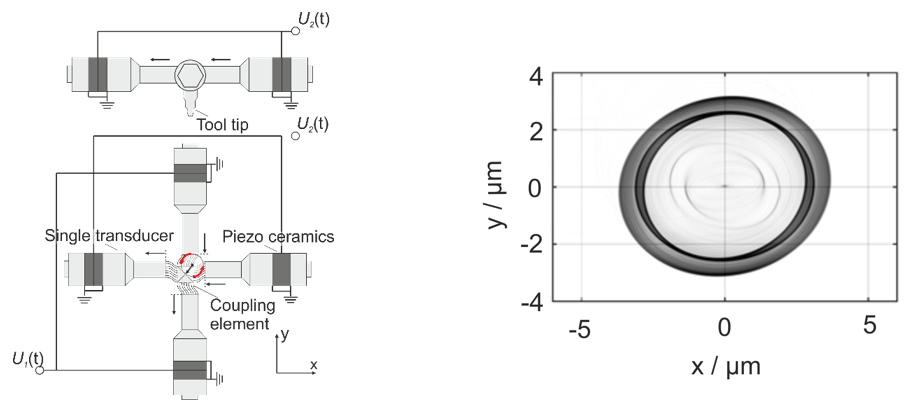Multi-Dimensional Wire Bonding
Ultrasonic wire bonding has been established for decades as an important contacting method in the microelectronics and semiconductor industry. In the current topic of the energy transition, the weight, compactness and performance of electronic components, for example in the automotive industry, are the focus of developments. In addition, the increasing energy demand in power electronics requires electrical connections with ever larger conductor cross-sections.
In the HoLeiB project, an oscillation system was set up that achieves a higher ultrasonic power than conventional ultrasonic wire bonding by using multidimensional multifrequency excitation. This concept now serves as a basis and is being further developed for ultrasonic wire bonding within the EU project "Power2Power". The project investigated if the higher ultrasonic power can be used to bond wires with large diameters more robustly than with conventional ultrasonic wire bonding. At the same time, it was investigated if the multi-dimensional excitation during the bonding process is more gentle on the substrate compared to conventional ultrasonic wire bonding, in order to contribute to the sustainability of electronic components, as a longer lifespan of the components can be achieved. The investigations carried out showed that aluminium wire bonding achieved comparable bonding qualities to conventional ultrasonic wire bonding, but no significant advantage was achieved with regard to substrate damage. In contrast, multidimensional wire bonding with copper wire significantly reduced cracks in the chip. However, more cracks occurred in the metallisation layer of the chip compared to the conventional ultrasonic wire bonding.
Publications on multidimensional ultrasonic wire bonding are listed here.



